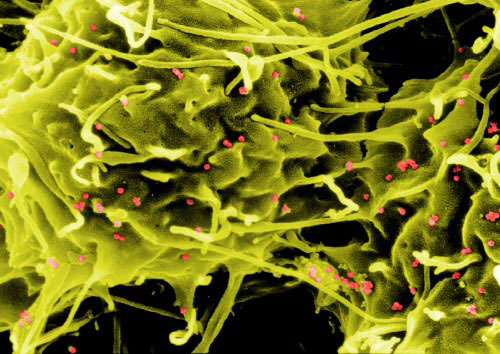| Jan 27, 2011 |
Medicine meets material research
|
|
(Nanowerk News) In future, Empa and the Cantonal Hospital St. Gall will work together more intensively in various fields of research and development in medicinal and medical materials. In addition to previous cooperative projects in the field of human stem cells, current research topics such as nano-safety, immunology and implant development will also be tackled. The first projects have already begun at the start of 2011.
|
|
Within the framework of more intensified cooperation between Empa and the Cantonal Hospital St Gall two new collaborative projects commenced at the beginning of 2011. Together with scientists from the Gynaecological Clinic and the Institute of Pathology, the exact transport mechanism of nanoparticles through the placenta, and their influence on placental tissue, will be investigated. A new perfusion system which maintains blood circulation through the maternal and foetal zones of the placenta (thus keeping it alive) is currently being constructed at Empa. And, together with the researchers from the Institute of Immunobiology at the hospital's medical research centre, Empa scientists would also like to study the possible effects of nanomaterials on the human immune system.
|
 |
| Macrophages, a type of cell found in the immune system, surrounded by nanoparticles.
|
|
Nano-safety – a central question
|
|
The Empa team has already recently shown that particles with a diameter of less than 200 to 300 nanometres can cross from the maternal to the foetal circulation zones in the placenta. This raises the question as to whether the placental tissue is damaged by the process and whether it can have an influence on the development of the unborn child. At the same time the researchers are thinking in terms of future nano-vehicles which could pass through the placenta in order to allow targeted treatment of the baby while still in its mother's body.
|
|
Nanotechnology is revolutionising many aspects of our everyday life. As with all new technologies, however, the risks it brings in its wake can never be completely excluded. For this reason Empa has for several years been investigating the possible negative effects of nanotechnology on humans and the environment, in particular with respect to free nanoparticles.
|
|
The effects are still generally unknown
|
|
Similarly, Empa will be working more closely with the hospital's Institute for Immunobiology. The human immune system, which protects us from potentially damaging substances and microorganisms, is sophisticated and complex. To what extent the immune system is affected by unwanted contact with nanomaterials is still completely unknown. Understanding how immune cells in the human body react to "nano-containers" is enormously important, not least given the possibilities of novel therapeutic techniques which this might make possible.
|
|
Stem cell research for hip implants
|
|
Empa has already been working for some time together with the Cantonal Hospital St Gall in the field of medical technology. For example staff at the Clinic for Orthopaedic Surgery and Traumatology make available to their Empa colleagues bone marrow samples on a weekly basis. This tissue is used to help optimise the surface properties of implants and test new materials. Bone marrow contains so-called mesenchymal stem cells – cells which are capable of differentiating into a range of different bodily tissues. The question is what kind of surface should an implant have, in order that stem cells "correctly" develop on it – that is, differentiate into the desired type of cell, for example, a bone cell? Only then is the implant able to grow together with the bone to form a stable platform which can assume the functions of the structure it is replacing. "Thanks to the cooperative work with hospital, we are now in a position to significantly expand our activities in the biotechnology and medical technology areas. In doing so we are taking a large step towards testing clinical applications for the materials and methods we have developed," says Peter Wick, co-leader of Empa's "Materials-Biology Interactions" laboratory. Further projects along the same lines are already being planned.
|

